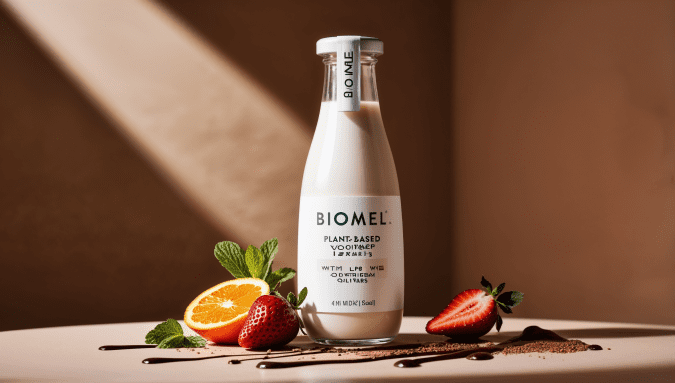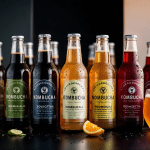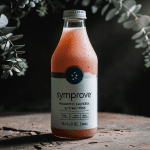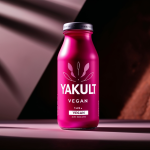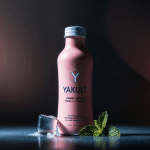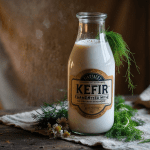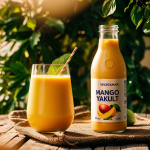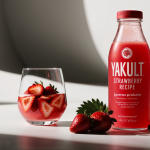This recipe will help you create a delicious plant-based probiotic drink inspired by Biomel, which includes live cultures and is designed for gut health. You can customize the flavors to your liking, whether you prefer chocolate, fruit, or a combination!
Ingredients
- 4 cups unsweetened almond milk (or any other plant-based milk)
- 1/2 cup unsweetened coconut yogurt (with live cultures) or 1-2 probiotic capsules (ensure they are vegan)
- 1/4 cup maple syrup (or to taste, adjust based on desired sweetness)
- 1 teaspoon vanilla extract (optional)
- Flavorings:
- For Chocolate Flavor: 2 tablespoons unsweetened cocoa powder
- For Fruity Flavor: 1 cup fresh or frozen fruits (like strawberries, blueberries, or bananas)
Instructions
Prepare the Base:
- In a blender, combine the unsweetened almond milk and coconut yogurt (or the contents of the probiotic capsules). Blend until smooth.
Add Sweetener and Flavorings:
- If you’re making a chocolate-flavored drink, add the cocoa powder and maple syrup to the blender. For fruity flavors, add your choice of fresh or frozen fruits. If using vanilla extract, add it as well.
- Blend again until all ingredients are well combined and smooth.
Fermentation:
- Pour the mixture into a clean glass jar or container. Cover it with a cheesecloth or a clean kitchen towel secured with a rubber band to allow airflow while preventing contaminants.
- Place the jar in a warm, dark place (ideally between 68°F and 85°F or 20°C to 29°C) for about 24 to 48 hours. The longer it ferments, the tangier it will become.
Taste Testing:
- After 24 hours, taste your drink. If it has reached your desired level of tanginess, it’s ready! If not, let it ferment for additional time.
Strain and Store:
- Once fermented to your liking, strain the liquid through a fine mesh strainer into bottles or jars to remove any solids.
- If desired, add flavorings like fresh fruits or herbs at this stage.
- Seal the bottles tightly and refrigerate. Consume within one week for optimal freshness.
Enjoy:
- Shake well before serving and enjoy your homemade vegetarian probiotic drink as a refreshing beverage!
Tips
- Flavor Variations: Experiment with different fruits or spices like cinnamon for unique flavors.
- Monitoring Fermentation: Keep an eye on your drink during fermentation; warmer temperatures will speed up fermentation.
- SCOBY Option: If you have a SCOBY from making kombucha, you can use it instead of yogurt for fermentation!
Creative Flavors for Homemade Probiotic Drinks
- Orange Ginger Carrot Kvass: A refreshing blend of carrots, ginger, and orange for a zesty probiotic boost.
- Lacto-Fermented Lemonade: A tangy, effervescent twist on traditional lemonade, packed with beneficial bacteria.
- Gingered Tepache: A Mexican-inspired drink made from pineapple peels and ginger, offering a sweet and spicy flavor.
- Blueberry Mojito Kombucha: A fruity and minty kombucha that combines blueberries and fresh mint for a summer refreshment.
- Pineapple Ginger Fermented Drink: A tropical drink combining pineapple and ginger for a refreshing probiotic treat.
Can I Use Ginger Bug to Make a Probiotic Drink?
Yes, you can use a ginger bug to make a probiotic drink! A ginger bug is a natural starter culture made from fresh ginger, sugar, and water. It ferments to create beneficial bacteria, which can be added to fresh juices or teas to create homemade probiotic sodas or beverages like ginger ale.
Benefits of Using Pineapple Peels in Probiotic Drinks
Using pineapple peels in probiotic drinks offers several benefits:
- Natural Yeast: Pineapple peels contain natural yeasts that facilitate fermentation, creating a bubbly drink.
- Nutritional Value: They are rich in bromelain, an enzyme that aids digestion and has anti-inflammatory properties.
- Flavor Enhancement: Pineapple peels impart a tropical flavor to the drink, making it delicious and refreshing.
- Zero Waste: Utilizing pineapple peels reduces food waste, making it an eco-friendly choice.
How Do I Ferment a Probiotic Drink Without a Starter Culture?
You can ferment a probiotic drink without a traditional starter culture by using natural ingredients that contain beneficial bacteria. Here’s how:
- Use Fresh Fruits or Vegetables: Ingredients like apples, carrots, or beets can introduce wild yeasts and bacteria naturally present on their skins.
- Create a Ginger Bug: As mentioned earlier, mix grated ginger with sugar and water to create your own starter culture over several days.
- Ferment with Honey or Maple Syrup: Combine these sweeteners with water and your choice of fruits or herbs and let them sit covered at room temperature for 1-3 days until bubbles form.
- Use Whey from Yogurt: If you have access to yogurt with live cultures, you can use the whey as a starter by mixing it with your base liquid.
These methods allow you to create delicious homemade probiotic drinks without needing specific starter cultures! Enjoy experimenting with flavors and fermentation techniques!
This homemade vegetarian Biomel-inspired probiotic drink is not only nutritious but also customizable to suit your taste preferences! Enjoy!
